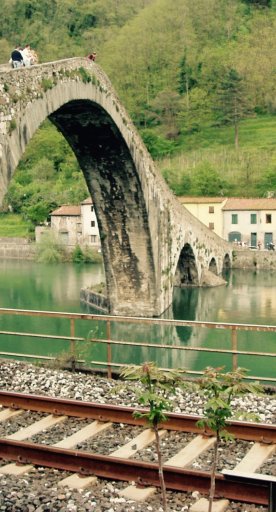

Trekking in the mountains: among hermitages and nature parks
Walking through the unspoilt nature
From the Apennines to Monte Amiata, you can venture into plenty of trekking circuits and experience a truly wild vacation among the nature parks, hermitages and ancient pilgrimage routes.
-
1.Lunigiana and Apuan Alps
-
2.Monte Amiata
-
3.Casentino
Lunigiana and Apuan Alps

We start with the Grand Italian Trail, a CAI trekking trail over 7000 km long, connecting all the regions of Italy.
A route created in 1983, by a group of journalists and hikers, across the Apennine ridge: Tuscany is also entirely crossed by this route, which enters the region through Lunigiana and the Passo dei Due Santi, in the municipality of Zeri.
On Monte Valoria, on the border between Pontremoli and Berceto, is the only point in Italy where it crosses the Via Francigena.
Again starting from Lunigiana, but crossing Garfagnana as far as Lucca, you can travel along the Via del Volto Santo, a devotional path about 150 km long, embraced by Christian spirituality, villages with thousands of years of history and the Apuan Alps in the background.
Lastly, one of the best-known hiking routes in the Apuan Alps: the Ring of Monte Forato. Starting from the pretty village of Fornovolasco, between woods and alpine ridges, the trail meets the Tana che Urla (Screaming Lair), a 400 m wide karst cavity that leads to a spectacular rock arch.
A day-long loop that requires a good level of fitness and proper equipment.
Monte Amiata

The unspoilt nature of Monte Amiata combined with the extraordinary power of the waters and its ancient villages: these are the elements that characterize the uniqueness of "Le Vie dell'Acqua", the water routes that stretch between the municipalities of Arcidosso, Castel del Piano, Santa Fiora, Seggiano and Castiglione d'Orcia.
The ten routes include a large circular trail extending over 38 miles (62 kilometers), to be tackled on foot.
This slow journey through villages, chestnut groves, forests and the beautiful Faggeta dell’Amiata leads to gushing springs.
A sustainable experience dedicated to those who love nature, to be undertaken at any time of the year.
Casentino

A land of unspoilt nature and deep spirituality, Casentino offers various options for those who love to walk.
The St Francis’ Way connects the numerous places linked to the life of St. Francis of Assisi in Tuscany.
From Florence, particularly from the Basilica of Santa Croce, you can get to the well-known Sanctuary of La Verna where Francis spent several periods of his life and where, in September 1224, he received the stigmata.
The itinerary then crosses the Valtiberina Toscana: from La Verna, two routes reach Anghiari, one route leads westward to Sasso di Simone and another rejoins the route leading to Assisi, passing through Monterchi.
The Apennine lands of the Casentino Forests, Mount Falterona and Campigna National Park, a historic protected area in the Tuscan-Romagna Apennines that preserves centuries-old forests and one of the largest forested areas in Italy, needs to be discovered calmly and patiently, following the gentle rhythms of the Apennines, in the shade of beech and chestnut forests.
The Sacred Forests Trail was created with precisely this intention: along a seven-stage trail that passes through the park's iconic places such as Mount Falterona, the Campigna Forest, the Acquacheta Valley and the hermitages of Camaldoli and La Verna, you can experience deep spirituality.
Before embarking on a hike, check the traversability status of the trails.













































